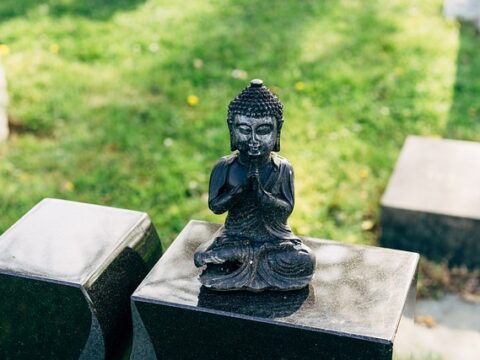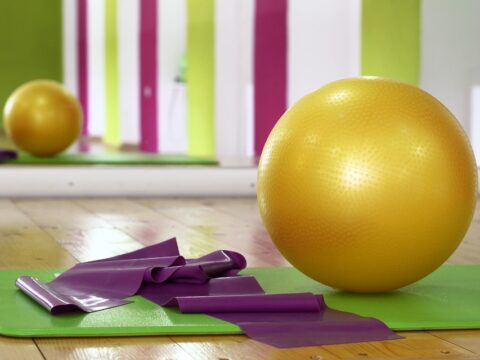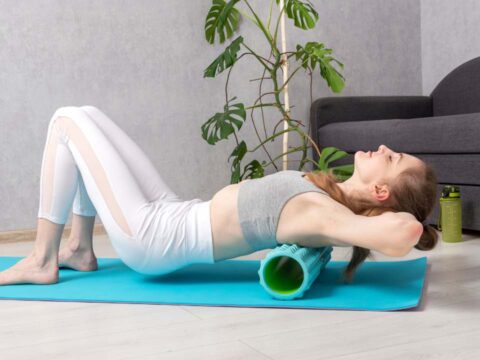Yoga balance exercises are a great way to strengthen your core and improve your overall balance. Transitions between poses are also an important aspect of yoga balance. The transition from one pose to the next should be smooth and gradual. This helps you avoid jerky movements that can throw you off balance.
Practising slowly and carefully will increase your chances of success with the poses. However, don’t be discouraged if you fall out of the exercise when transitioning to another pose. You can always try again later – yoga is an exercise, not a competition.
Podcast
What are the benefits of balancing yoga poses?
There are so many reasons why balancing yoga postures can be beneficial. It can help you gain strength, flexibility, stamina, balance and mental focus.
Some poses may seem difficult, but when you consider the benefits, they are worth the effort.
Stretch
When you stretch, your muscles become more flexible, allowing your body to move more freely. Stretching also helps loosen tight muscles. And stretching is good for your overall health.
Endurance
Stretching can help improve your endurance and overall fitness. Because stretching increases blood flow throughout your body, it can help improve your cardiovascular system.
Balance
Yoga poses can improve your balance, reducing the risk of falls. While there is no guarantee that you will never fall, practising regularly can reduce the likelihood of injury.
Strength
Balance yoga poses can help build your strength, making it easier to exercise.
Mental focus
Stretching can help you relax, which in turn reduces stress. And when you are relaxed, you can focus better.
These are just a few of the many benefits of balancing yoga poses. But if you take a closer look at the many reasons to practice yoga, you’ll find that the benefits far outweigh the time and effort involved.
5 Yoga Poses to Build Muscular Balance
Five of the most basic yoga poses are crucial for building muscular balance and strength. Each of them challenges the body in a different way. From bending the knee to balancing on one leg, each pose requires strength in the joints of the feet and legs. Correct posture of these poses is the key to most of the benefits.
Chair pose
The Yoga Chair Pose is a standing asana that resembles a squat. It has its origins in medieval hatha yoga. In the medieval version of the exercise, the chair was low to the ground. The modern version of the posture is called Utkatasana.
First you need to sit in front of the chair and place your feet flat on the floor. Then bend your legs to the side and lift your chest. You also need to relax your shoulders and tense your core. Remember to breathe deeply as you hold this position. Your back will arch slightly, but the pose is not strenuous for your spine.
The biggest challenge with this pose is balance. It requires joint and muscle movement to maintain balance. In addition to calm breathing, it is important to tense the leg muscles to support your body weight and maintain a balanced posture. The thigh muscles should also be active. Once you have mastered this pose, you can move on to more difficult variations.
Chair pose is most often done at the beginning of a yoga class. It is an excellent pose to open up the spine and thigh muscles so that you can move freely throughout the body.
Warrior 3 Pose
Warrior 3 Pose is a challenging pose that can improve balance and flexibility. The pose requires the practitioner to stretch the entire body and engage the muscles of the legs and hips. It is also a great opportunity for meditation. Here are some tips to help you perform this challenging pose.
First, make sure you have a stable surface. If the table is not stable, you can place a chair directly over the yoga mat. The student then holds on to the back of the chair with their hands.
Another possibility is to use a wall as a stable counter. Blocks placed shoulder-width apart over the yoga mat can also be used for balance.
When performing the Yoga Warrior III pose, remember that the hip of the raised leg naturally lifts. When this happens, you need to encourage the hip to stay lower. This improves the overall alignment of your body and helps you maintain balance. While the pose can be challenging, it is also a great way to improve balance and flexibility.
The Warrior III Pose is a dynamic standing pose that strengthens the abdominal muscles and the back of the body. The pose requires full body coordination, concentration and balance. It also boosts self-confidence and helps you achieve a fighting, powerful posture. It also helps to release mental and emotional blocks.
Plank Posture
The plank posture is an exercise to strengthen the entire centre of the body. To begin, stand with your feet shoulder-width apart and your hands shoulder-width apart. Keep your elbows and wrists under your shoulders. When your hands rest on the floor, bend your knees and bring your shins towards the ceiling.
Once you have reached the desired length, you can lift your leg slightly and push your tailbone towards your pubic bone. This will help open your chest and invigorate your whole body. Then exhale to lower your leg back to the floor. Stay in this pose for two to three minutes, longer if possible.
You can deepen the pose further by lifting one leg at a time and holding it for five breaths. You can also try rolling the edge of the mat to relieve sore wrists. If you find it difficult, place your hands on the edge of the mat and curl your fingers. If you can’t reach the top of the mat, you can also use a wall.
The Plank Pose not only builds strength but also helps you develop stamina. It also forms the basis for other arm balance exercises such as the shoulder stand and arm balance. It also helps you learn to breathe properly and find your centre when practising yoga.
Crow Pose
Yoga crow pose is a balancing asana that requires you to lift your feet and hands off the ground. It is similar to bakasana and kakasana. Both of these poses require your hands to be on the floor, your shins on your upper arms and your feet off the floor.
You need a yoga block to get into the pose. This support raises your knees and stabilises your upper arms so that you can hold the pose more easily. You can also start in the version with your arms bent, but remember to keep your elbows bent. You can hold this position for up to 10 seconds before moving on to the next step.
Once you are ready for the crow, you need to get into the right position to be able to keep your balance. This arm balance requires arm strength and you can achieve this by strengthening your arms, your hips and your torso. You may also need a cushion or blanket to protect your hips.
For beginners, Yoga Crow Pose may seem intimidating, but it is actually relatively easy to learn. It is a pose that should be on every yogi’s bucket list. To get into this position, you first need to squat down. This will help you develop your body awareness and hips.
Dolphin Pose
The yoga dolphin pose is a forward bend that develops flexibility in the core of the body. It works the oblique and lower abdominal muscles as well as the stabilisers of the shoulder blades. The pose starts with the hands and knees and ends with the upper body parallel to the mat. To perform this pose correctly, first bend the elbows and lower the forearms. Then slowly stretch the legs through.
The Dolphin Pose can be performed in a yoga class or at home. It offers many physical and mental benefits, such as better digestion, relief from back pain and reduction of fatigue. It also improves balance and helps prevent osteoporosis. It also strengthens the arms and legs and stretches the shoulders and hamstrings. It is also beneficial for people with flat feet and high blood pressure.
If you work on your balance, you can move on to the next stage. The dolphin pose is an excellent warm-up for backflips. It strengthens the shoulders, arms and upper back. The pose also helps volleyball players to pass the ball when hitting. It also helps swimmers maintain correct posture.
As a yoga pose for beginners, the dolphin pose is a great way to warm up and strengthen the shoulder girdle. The pose is also an excellent variation for beginners who have wrist problems. In addition, it challenges the mind and adds variety to your practice.
Tips for improving balance in yoga postures
Balance is often mentioned in yoga as one of the most important components of any practice. As our balance is crucial to our health and well-being, it is important that we develop the ability to balance in all areas of our lives. Balance comes from a variety of factors and can be improved in many ways.
Yoga poses that can be improved in other ways
Apart from improving our balance, we can also improve other aspects of our yoga poses. To do this, it is important that we focus on our breathing. When we breathe deeply, we expand our lungs, which helps us feel more energetic. You can also learn to focus on your posture by lifting your chest and shoulders.
We are constantly busy with a variety of activities and sometimes we find it hard to stay organised. But if you want to stay organised, it’s entirely possible. Here are five of the best ways to stay organised.
Create a daily routine
Many of us feel like we have too much to do every day and that we can never get it all done. However, if you create a daily routine, you can ensure that you have enough time to do the things you need to do.
For example, you can use a calendar to keep track of your tasks and make sure you do them at a certain time each day. By creating a routine, you can avoid feeling overwhelmed and you can stay on top of things.
Create a to-do list
A to-do list can help you stay on top of things. When making your list, make sure you write down the things that are most important to you.




